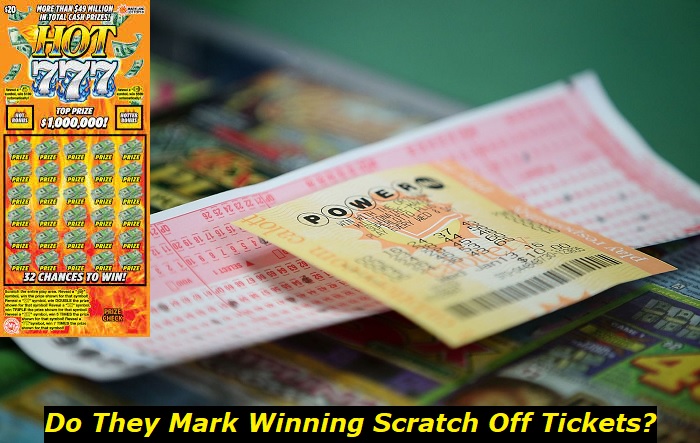In this article, we’ll explore the nuts and bolts of how coin pushers operate and, more crucially, how they make money for casinos and arcade owners. As we journey through the mechanics and economics of these machines, remember: gambling, in any form, is a risky venture.
It’s not a guaranteed way to win money, but rather a form of entertainment that should be approached with caution and understanding. Whether you’re a seasoned gambler or just curious about the workings of these intriguing machines, this exploration is for you.

The Mechanics of Coin Pushers
Let’s get a bit technical, shall we? Understanding the mechanics of coin pushers is key to demystifying how they captivate players and manage to be profitable for casino and arcade owners. At their core, coin pushers are about precision, timing, and a bit of luck.
Imagine a shelf filled with coins, teetering on the edge, just waiting for that one additional coin to send a cascade of coins into your hands. That’s the essence of a coin pusher. You drop a coin into a slot, and it lands on a moving platform. This platform is usually divided into shelves or layers that move back and forth. The goal? To push the coins on the platform over the edge and into the collection bin for you to collect.
But it’s not as easy as it sounds. These platforms are designed to move in a way that makes it challenging to predict exactly where your coin will land and how it will affect the coins already on the platform. The movement can be subtle or complex, often involving a pusher that moves forward and backward, pushing the coins closer to the edge with each movement.
Then there’s the visual and auditory appeal. Coin pushers are typically bright and colorful, with flashing lights and enticing sounds. Each coin drop is accompanied by the clink of metal, and the occasional win is celebrated with a symphony of sounds and flashing lights. This sensory appeal adds to the excitement and allure of the game, drawing players in and encouraging them to keep playing.
It’s this combination of physical mechanics, chance, and sensory stimulation that makes coin pushers both engaging and profitable. They are designed to give players the impression that a big win is always just one coin away, keeping the game enticing and thrilling. But as we will discuss later, the reality of the odds and how these machines are calibrated for profit can be quite different from the excitement they project.
Remember, while understanding the mechanics can enhance your experience, it doesn’t guarantee success. The world of gambling is unpredictable, and coin pushers are no exception. Stay tuned as we delve deeper into how these machines contribute to the buzzing atmosphere of casinos and arcades, while always reminding ourselves of the importance of responsible gambling.
Revenue Generation Strategies in Coin Pushers
Now, let’s peel back the curtain and look at how coin pushers, with their alluring lights and sounds, are not just games of chance but also sophisticated revenue generators. Here’s how they are strategically set up to ensure profitability:
1) Initial Coin Entry Cost
The first layer of revenue comes from the cost to play. Players need to insert coins (or tokens) to play the game. This cost is usually small enough to encourage repeated plays but adds up over time, contributing significantly to the machine’s earnings.
2) Prize Placement and Control
Some coin pushers offer prizes alongside coins. These prizes are often placed in such a way that they seem easy to win, tantalizing players. However, they are strategically positioned to ensure they’re not too easy to push off the edge, encouraging continued play and investment.
3) Calibration of the Pusher Mechanism
The heart of the coin pusher’s revenue strategy lies in its pusher mechanism. This mechanism is calibrated to push coins off the edge less frequently than the number of coins inserted. In essence, it’s designed to ensure that more coins are coming in than going out.
4) Psychological Appeal
The intermittent reinforcement of winning a few coins creates a psychological appeal, encouraging players to continue playing in the hopes of a bigger payout. This intermittent reward system is key in keeping players engaged for longer periods.
5) Limited High-Value Payouts
While high-value coins or tokens might be present, their payout is controlled. The positioning and movement of these higher-value items are carefully managed to ensure they are not won too easily, balancing the excitement of potential high rewards with the reality of limited payouts.
6) Maintenance and Upkeep Costs
While not a direct revenue strategy, keeping the machines well-maintained and functioning optimally ensures consistent play and revenue. Breakdowns or malfunctions can disrupt the revenue flow and player trust.
7) Aesthetic Upkeep
Regular updates in design, lights, and sound effects keep the machines appealing and inviting. This aesthetic upkeep is crucial in attracting new players and retaining the interest of regulars.
These strategies collectively ensure that while players enjoy the thrill of the game, the odds are tilted in favor of the house. It’s a delicate balance between keeping the game exciting and ensuring it remains profitable.
Player Experience and Chances of Winning
The experience of playing a coin pusher is a unique blend of anticipation, strategy, and the lure of potential rewards. For many, it’s the thrill of watching the coins shuffle and clink, coupled with the suspense of not knowing when a push might result in a win. This simple yet captivating gameplay keeps players returning, each time with the hope that their next coin might be the one to trigger a cascade of coins.
However, it’s essential to temper this excitement with a realistic understanding of the odds. The truth is, coin pushers are designed for entertainment, not as a reliable way to make money. The chances of winning are carefully calibrated by the machine’s design and mechanics, ensuring that payouts are less frequent than the number of coins played. This means that over time, more money is typically put into the machine than is won by players.
It’s this delicate balance between the joy of playing and the low probability of large winnings that defines the coin pusher experience. While there’s always a chance for that exhilarating win, it’s important for players to approach these machines with the understanding that they are a form of amusement, where the outcome is uncertain and wins are not guaranteed.
Comparative Analysis with Other Casino Games
When we place coin pushers in the broader context of casino games, interesting contrasts and similarities emerge. While each game offers its unique allure and style of play, they all share the common thread of blending chance with entertainment.
Coin pushers stand out for their simplicity and tactile engagement. Unlike games that rely heavily on strategy or deep understanding, such as poker or blackjack, coin pushers are accessible to everyone, regardless of their gambling experience. This simplicity, combined with the immediate visual and auditory feedback of coins falling, offers an instantly gratifying experience that’s less prevalent in more complex games.
However, when it comes to the odds of winning, coin pushers are similar to many casino favorites, like slot machines. Both are designed to pay out less than the odds of winning, ensuring profitability for the casino. The primary difference lies in the player’s perception of control. In coin pushers, players might feel they have more influence over the outcome by choosing where to place their coin, whereas slot machines are purely a game of chance with every pull of the lever.
Another key difference is the pacing. Table games like roulette or craps involve periods of high tension and dramatic outcomes, contrasting with the steady, continuous play of a coin pusher. This difference in pacing can appeal to different types of players – those seeking a quick adrenaline rush versus those who prefer a more prolonged, steady form of entertainment.
In terms of profitability for casinos, coin pushers can be highly lucrative, much like slot machines. Their low operating costs, combined with their appeal to a wide range of players, make them a steady source of revenue. However, they might not reach the high stakes associated with table games, where individual bets can be significantly larger.
Ultimately, each casino game, coin pushers included, offers its unique blend of risk, strategy, and excitement. They are all unified by the underlying principle of gambling: the outcome is never guaranteed, and the risk is always a part of the game. As players, understanding this principle and approaching each game as a form of paid entertainment rather than a sure way to make money is key to a responsible and enjoyable gambling experience.
Conclusion and Responsible Gambling Reminder
In conclusion, our exploration of coin pushers reveals a fascinating intersection of simple mechanics, captivating gameplay, and strategic revenue generation. These machines, with their rhythmic clinking of coins and flashing lights, offer an accessible and engaging form of entertainment. However, like all casino games, they are designed with the odds favoring the house, ensuring profitability for casinos and arcades.
As we wrap up this journey through the world of coin pushers, it’s crucial to emphasize the importance of responsible gambling. Remember, gambling should always be approached as a form of paid entertainment, not a reliable method for financial gain. The thrill of playing, the chance of winning, and the inevitable risk of losing are all part of the experience.




